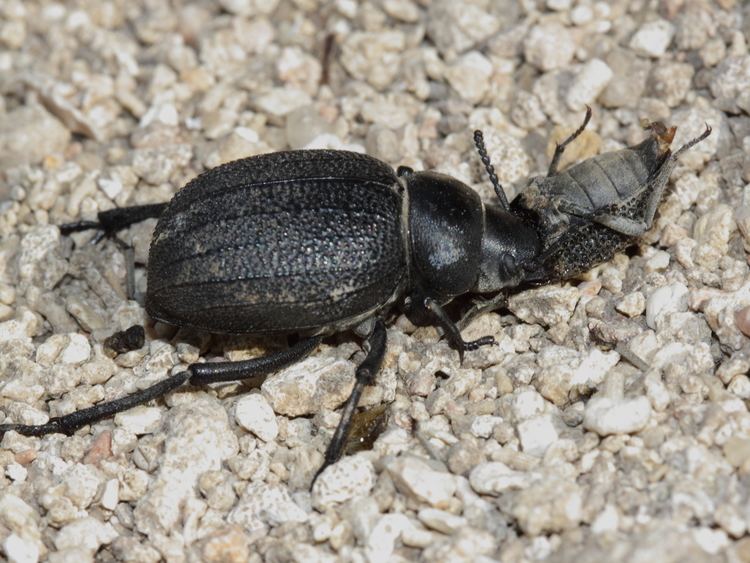Order Coleoptera Rank Genus | Family Tenebrionidae | |
 | ||
Similar Pimeliinae, Blaps, Darkling beetle, Chrysanthia viridissima, Pimelea | ||
Pimelia grossa spazzino delle dune
Reproduction
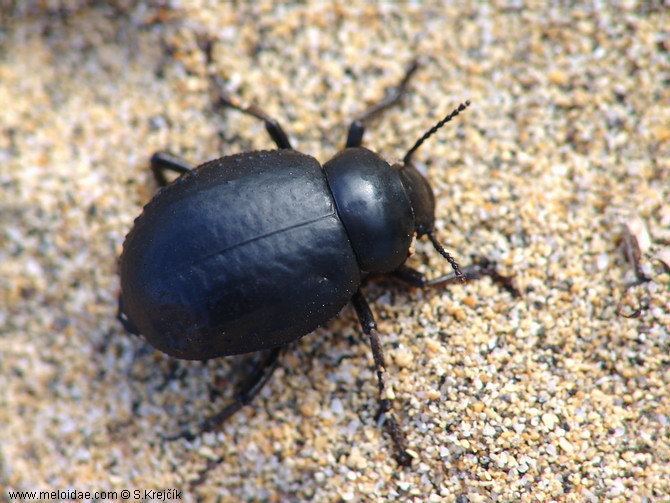
Pimelia are univoltine, with one generation per year. Species in North Africa emerge in January to begin mating, synchronously with floral bloom. Normally Pimelia are detrivores, but during mating season they may cannibalize other adults, larvae, and eggs. This behavior may be due to need for extra nutrients or simply to eliminate competitors. Following behavior and mating take place on the slip face of a sand dune. After mating, the female digs a shallow hole and deposits a single egg, which closely resembles a grain of white rice. As the temperature rises above 50 °C the adult population dies off. Immature stages remain below the surface until maturity. During the winter the adults emerge.
Desert adaptations
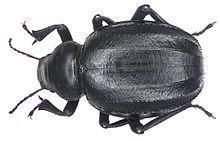
Many Pimelia species are conspicuous as they cross sand dunes. Locomotion in this difficult terrain is facilitated by numerous tarsal setae that allow for rapid tumbling behavior.
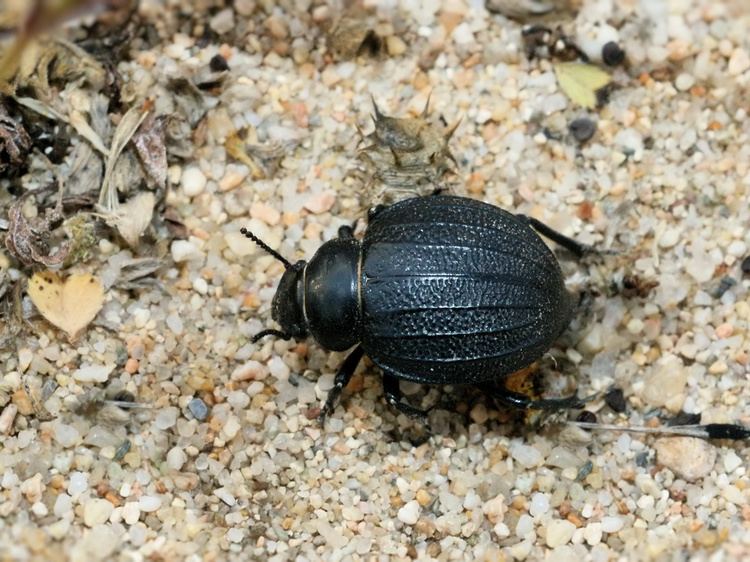
Adaptations to arid climates and desert environments allow Pimelia to survive and reproduce in the dunes, but the relative importance of abiotic and biotic factors in this respect is not clear. Environmental factors influencing these adaptations are extremes of temperature and humidity, excessive radiant energy, low and irregular rainfall, long periods of drought, strong winds, unstable sand substrates, and sparse, specialized vegetation.
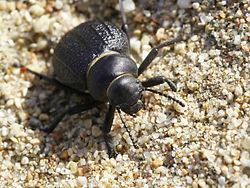
Several morphological adaptations allow Pimelia to survive in the desert, including the lipid layers of the epicuticle, fused sclerites, the subelytral cavity, and the texture of the body surface. Much of the success of tenebrionid beetles in desert habitats is due to the development of impermeable cuticles. The fused sclerites of desert tenebrionids minimize water loss, but they result in flightlessness. The main barrier to the outward flow of water through insect integument is the lipid layer of the epicuticle. In many terrestrial arthropods, the temperature affects the permeability of the cuticle. There is a sudden increase in the rate of transpiration at what is known as the transition temperature. This may coincide with a physical change, perhaps the disorientation of the lipid molecules in the epicuticle. In tenebrionid beetles, the spiracles open into a humid subelytral cavity rather than directly to the atmosphere, thus reducing water loss. Water retention by intact elytral covers is greater at 0% relative humidity than at 97%. The size of the cavity is not important. Transpiration increases if the elytra are removed, emphasizing the importance of the epicuticle and subelytral cavity. Pimelia have tubercles on the surface of their elytra which scatter and reflect incident energy.
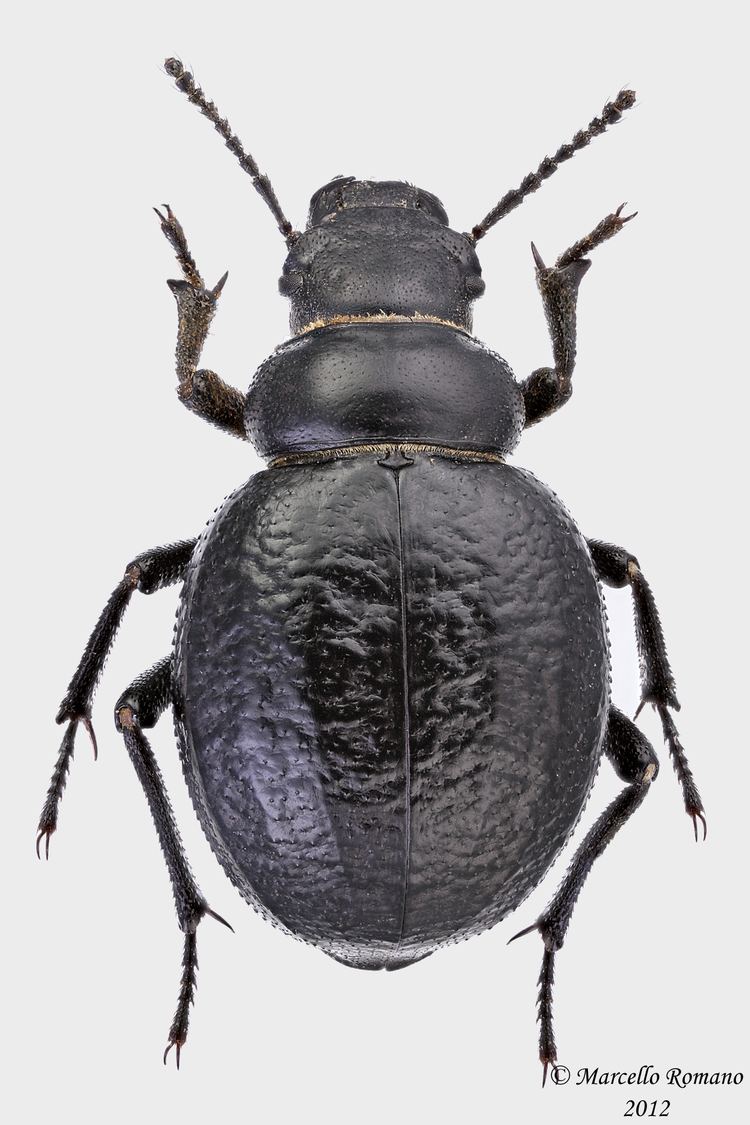
Burrowing is probably the most important behavior modification for heat regulation in Pimelia, because it permits access to a broad range of ambient temperatures. Pimelia are diurnal, emerging in early morning and late evening but remaining under the sand during the hot hours of the day.
